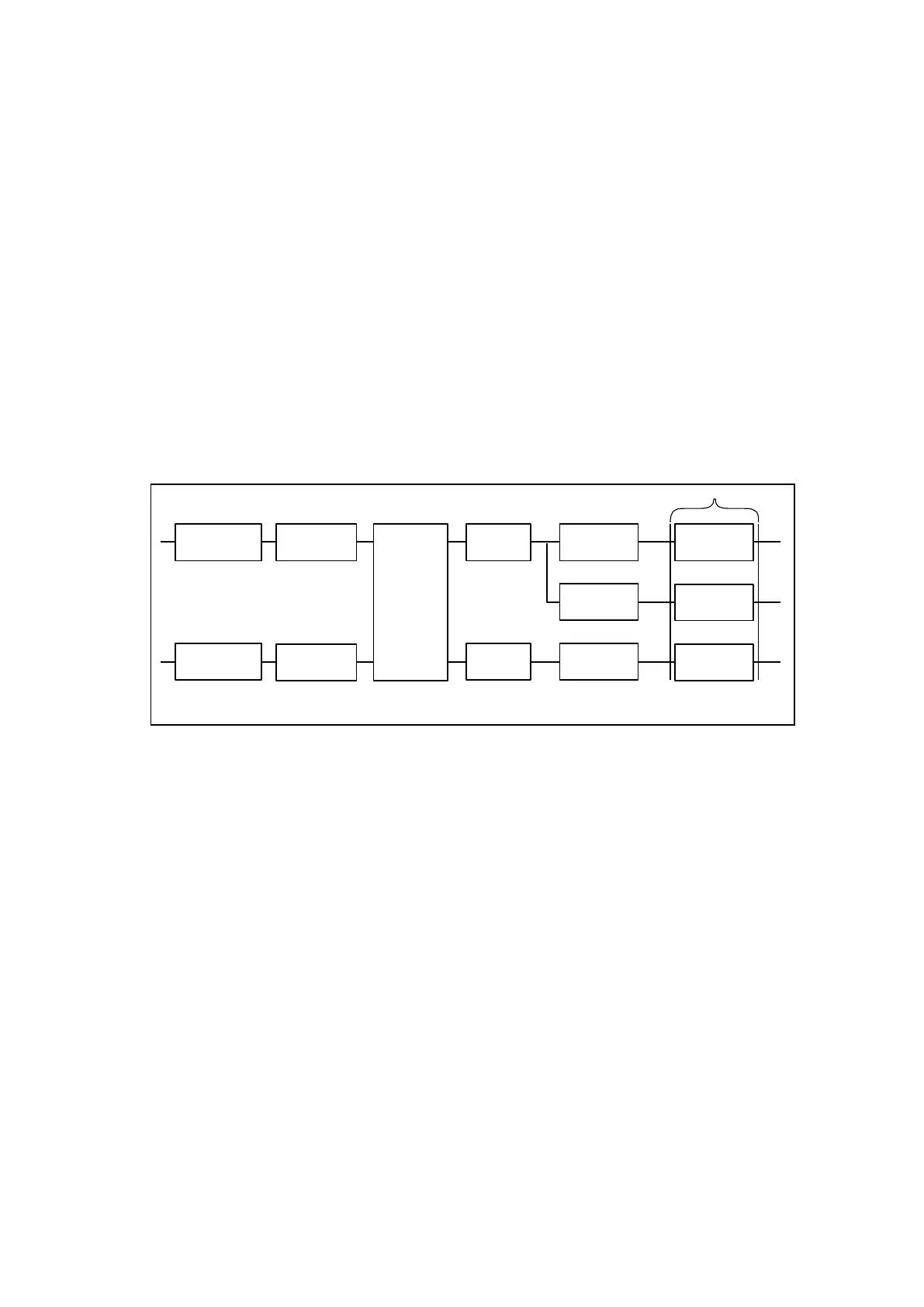b6
Firmware D
-18 MiCOM P40 Agile
3.4.1 Overview - protection and control scheduling
After initialisation at start-up, the protection and control task is suspended until there are
sufficient samples available for it to process. The acquisition of samples is controlled by a
‘sampling function’ which is called by the system services software and takes each set of
new samples from the input module and stores them in a two-cycle buffer. The protection
and control software resumes execution when the number of unprocessed samples in the
buffer reaches a certain number. For the 442-444 distance protection relay, the protection
task is executed twice per cycle, i.e. after every 24 samples for the sample rate of 48
samples per power cycle used by the relay. The protection and control software is
suspended again when all of its processing on a set of samples is complete. This allows
operations by other software tasks to take place.
3.4.2 Signal processing
The sampling function provides filtering of the digital input signals from the opto-isolators and
frequency tracking of the analogue signals. The digital inputs are checked against their
previous value over a period of half a cycle. Therefore a change in the state of one of the
inputs must be maintained over at least half a cycle before it is registered with the protection
and control software.
Transformation &
Low Pass Filter
ANTI-ALIASING
FILTER
ANTI-ALIASING
FILTER
LOW PASS
FILTER
ONE-SAMPLE
DELAY
ONE-SAMPLE
DELAY
FIR
DERIVATOR
SUB-SAMPLE
1/2
12 Samples per Cycle
I
f
I'
f
V
P3029ENa
I
V
FIR = Impulse Finite Response Filter
SUB-SAMPLE
1/2
SUB-SAMPLE
1/2
LOW PASS
FILTER
Transformation &
Low Pass Filter
A-D
DFT
Converter
48 Samples
per Cycle
Figure 6 - Signal acquisition and processing
The frequency tracking of the analogue input signals is achieved by a recursive Fourier
algorithm which is applied to one of the input signals, and works by detecting a change in the
measured signal’s phase angle. The calculated value of the frequency is used to modify the
sample rate being used by the input module so as to achieve a constant sample rate of 48
samples per cycle of the power waveform. The value of the frequency is also stored for use
by the protection and control task.
When the protection and control task is re-started by the sampling function, it calculates the
Fourier components for the analogue signals. The Fourier components are calculated using
a one-cycle, 48-sample Discrete Fourier Transform (DFT). The DFT is always calculated
using the last cycle of samples from the 2-cycle buffer, i.e. the most recent data is used. The
DFT used in this way extracts the power frequency fundamental component from the signal
and produces the magnitude and phase angle of the fundamental in rectangular component
format. The DFT provides an accurate measurement of the fundamental frequency
component, and effective filtering of harmonic frequencies and noise. This performance is
achieved in conjunction with the relay input module which provides hardware anti-alias
filtering to attenuate frequencies above the half sample rate, and frequency tracking to
maintain a sample rate of 48 samples per cycle. The Fourier components of the input current
and voltage signals are stored in memory so that they can be accessed by all of the
protection elements’ algorithms. The samples from the input module are also used in an
unprocessed form by the disturbance recorder for waveform recording and to calculate true
rms values of current, voltage and power for metering purposes.

